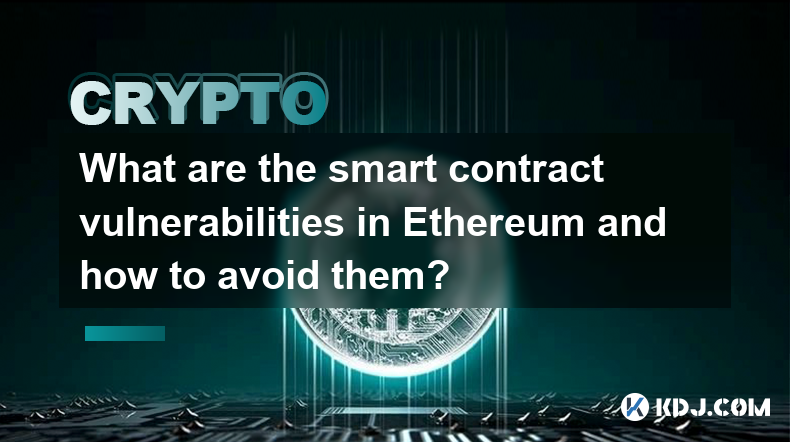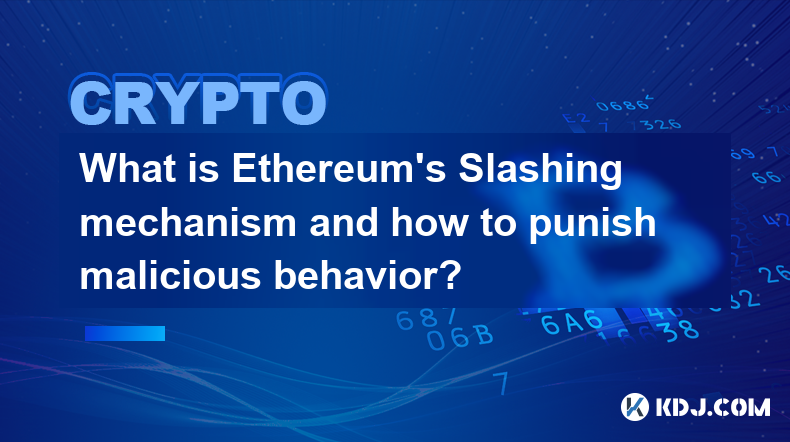-
 Bitcoin
Bitcoin $106,731.2224
-1.05% -
 Ethereum
Ethereum $2,444.9804
-1.20% -
 Tether USDt
Tether USDt $1.0003
0.01% -
 XRP
XRP $2.1882
0.09% -
 BNB
BNB $651.1435
-0.61% -
 Solana
Solana $148.3252
-2.09% -
 USDC
USDC $1.0000
0.01% -
 TRON
TRON $0.2787
0.55% -
 Dogecoin
Dogecoin $0.1598
-3.16% -
 Cardano
Cardano $0.5520
-2.43% -
 Hyperliquid
Hyperliquid $39.0960
-2.64% -
 Bitcoin Cash
Bitcoin Cash $516.9519
2.98% -
 Sui
Sui $2.7011
-2.95% -
 Chainlink
Chainlink $13.0582
-1.71% -
 UNUS SED LEO
UNUS SED LEO $8.9250
-2.53% -
 Stellar
Stellar $0.2359
-0.18% -
 Avalanche
Avalanche $17.3856
-3.73% -
 Toncoin
Toncoin $2.8095
-3.56% -
 Shiba Inu
Shiba Inu $0.0...01121
-1.95% -
 Litecoin
Litecoin $85.2795
-0.85% -
 Hedera
Hedera $0.1471
-2.15% -
 Monero
Monero $319.8004
1.12% -
 Dai
Dai $1.0001
0.01% -
 Ethena USDe
Ethena USDe $1.0001
0.02% -
 Bitget Token
Bitget Token $4.5344
-1.07% -
 Polkadot
Polkadot $3.3224
-2.96% -
 Uniswap
Uniswap $6.9697
-2.75% -
 Aave
Aave $266.1658
-2.25% -
 Pepe
Pepe $0.0...09414
-3.41% -
 Pi
Pi $0.4913
-3.29%
What are the smart contract vulnerabilities in Ethereum and how to avoid them?
Smart contract vulnerabilities, like reentrancy attacks, integer overflow, and uninitialized variables, should be addressed by using secure compilers, choosing secure programming languages, implementing security audits, and thorough testing techniques.
Feb 19, 2025 at 05:24 pm

How to Avoid Smart Contract Vulnerabilities in Ethereum
Smart contracts are an essential part of the Ethereum ecosystem. They allow developers to create decentralized applications (dApps) that run on the blockchain. However, smart contracts are not without their risks. If they are not properly coded, they can be vulnerable to attack.
There are a number of different types of smart contract vulnerabilities. Some of the most common include:
- Reentrancy attacks: These attacks exploit a vulnerability in the way that smart contracts handle external calls. If a smart contract makes an external call, and the called contract then reenters the calling contract, the calling contract may be vulnerable to attack.
- Integer overflow: This occurs when a smart contract uses an integer variable, and it attempts to store a value that is too large or too small for the variable type. This can lead to unexpected behavior, and it can potentially allow an attacker to steal funds from the smart contract.
- Underflow: This is the opposite of integer overflow, and it occurs when a smart contract uses an integer variable, and it attempts to store a value that is too large or too small for the variable type. This can lead to unexpected behavior, and it can potentially allow an attacker to steal funds from the smart contract.
- Uninitialized variables: This occurs when a smart contract uses a variable, and it does not initialize it to a specific value before using it. This can lead to unexpected behavior, and it can potentially allow an attacker to steal funds from the smart contract.
- Denial of service attacks: These attacks exploit a vulnerability in the way that smart contracts process requests. If a smart contract is not properly coded, an attacker may be able to send a large number of requests to the smart contract, and the smart contract may be unable to process all of the requests. This can prevent the smart contract from functioning correctly, and it can potentially allow an attacker to steal funds from the smart contract.
There are a number of steps that you can take to avoid smart contract vulnerabilities. These include:
- Use a secure compiler: The first step to avoiding smart contract vulnerabilities is to use a secure compiler. A secure compiler will check your code for potential vulnerabilities, and it will help you to identify and fix any vulnerabilities before you deploy your smart contract.
- Use a secure programming language: Another way to avoid smart contract vulnerabilities is to use a secure programming language. A secure programming language will help you to avoid common coding errors that can lead to vulnerabilities.
- Use a security audit: A security audit is a detailed review of your smart contract code by a third-party expert. A security audit can help you to identify and fix any vulnerabilities in your code, and it can also provide you with recommendations on how to improve the security of your smart contract.
- Avoid using external libraries: External libraries can be a great way to extend the functionality of your smart contract. However, external libraries can also introduce new vulnerabilities into your smart contract. If you do use external libraries, be sure to review the code carefully and make sure that it is secure.
- Test your smart contract: Before you deploy your smart contract, it is important to test it carefully. Testing will help you to identify and fix any bugs or vulnerabilities in your code.
- Deploy your smart contract to a test network: Once you have tested your smart contract, you should deploy it to a test network. A test network is a blockchain network that is not connected to the main Ethereum network. This will allow you to test your smart contract in a safe environment, and you can make sure that it is working correctly before you deploy it to the main Ethereum network.
FAQs
What is the most serious smart contract vulnerability?
The most serious smart contract vulnerability is the reentrancy attack. This attack exploits a vulnerability in the way that smart contracts handle external calls. If a smart contract makes an external call, and the called contract then reenters the calling contract, the calling contract may be vulnerable to attack.
How can I protect my smart contract from vulnerabilities?
There are a number of steps that you can take to protect your smart contract from vulnerabilities. These include:
- Using a secure compiler
- Using a secure programming language
- Using a security audit
- Avoiding using external libraries
- Testing your smart contract
- Deploying your smart contract to a test network
What is the best way to test my smart contract?
The best way to test your smart contract is to use a unit testing framework. A unit testing framework will allow you to test individual functions and methods in your smart contract. You can also use integration tests to test how your smart contract works with other smart contracts and external services.
Disclaimer:info@kdj.com
The information provided is not trading advice. kdj.com does not assume any responsibility for any investments made based on the information provided in this article. Cryptocurrencies are highly volatile and it is highly recommended that you invest with caution after thorough research!
If you believe that the content used on this website infringes your copyright, please contact us immediately (info@kdj.com) and we will delete it promptly.
- Crypto Rollercoaster: Bitcoin, Altcoins, and the Wild Ride Ahead
- 2025-07-02 07:10:16
- Meme Coins Mania: Arctic Pablo Leads the New Crypto Pack
- 2025-07-02 06:30:11
- Meme Coins on the Move: Arctic Pablo, Bone ShibaSwap, and the Quest for the Next Big Thing
- 2025-07-02 06:30:11
- Crypto ETF Approval: Grayscale's Win & the SEC Rule Change
- 2025-07-02 07:10:16
- Toncoin's Price Wobbles: Engulfing Candle Holds the Key?
- 2025-07-02 07:15:11
- Crypto ETFs: Navigating the US Market Path and SEC Considerations
- 2025-07-02 06:50:12
Related knowledge

What is Ethereum’s Slashing mechanism and how to punish malicious behavior?
Feb 20,2025 at 03:08am
Key PointsOverview of slashingDifferent types of slashing in EthereumIncentives and consequences of slashingIdentifying and reporting slashed validatorsOngoing discussions and potential improvementsEthereum's Slashing Mechanism: Punishing Malicious BehaviorEthereum's slashing mechanism is an essential tool for ensuring network security and punishing mal...

What is the verifier node of Ethereum and how to become a verifier?
Feb 19,2025 at 06:00pm
The Verifier Node of Ethereum: A Comprehensive GuideKey Points:What is a Verifier Node?How to Become a Verifier NodeResponsibilities and Rewards of a Verifier NodeMinimum Requirements for Becoming a Verifier NodePotential Difficulties in Running a Verifier Node1. What is a Verifier Node?A Verifier Node is an independent entity on the Ethereum network th...

What is Ethereum’s staking, and how to participate and earn money?
Feb 19,2025 at 04:37pm
Key Points:Understanding Ethereum's Staking MechanismSteps to Participate in StakingBenefits and Rewards of StakingSecurity and Risk ConsiderationsTechnical Requirements and Hardware OptionsPotential Challenges and Troubleshooting TipsFAQs on Ethereum StakingWhat is Ethereum's Staking?Proof-of-Stake (PoS) is a consensus mechanism used in blockchain netw...

What is Ethereum’s DAO (Decentralized Autonomous Organization) and how does it work?
Feb 20,2025 at 03:12am
Key PointsDefinition and Structure of a DAOGovernance and Decision-Making in DAOsBenefits and Use Cases of DAOsChallenges and Limitations of DAOsWhat is Ethereum's DAO (Decentralized Autonomous Organization) and How Does It Work?Definition and Structure of a DAOA Decentralized Autonomous Organization (DAO) is an innovative governance and management fram...

What is Ethereum's multi-signature wallet and how to improve security?
Feb 20,2025 at 02:18pm
Key Points:Understanding the Concept of a Multi-Signature WalletBenefits and Drawbacks of Multisig WalletsRequirements for Setting Up a Multisig WalletStep-by-Step Guide to Generating a Multisig WalletImplementing Strategies for Enhanced Security1. Understanding the Concept of a Multi-Signature WalletA multi-signature (multisig) wallet in the Ethereum e...

What is Ethereum's oracle and how to provide data for smart contracts?
Feb 21,2025 at 01:30am
Key Points:Understanding the concept of oracles in EthereumExploring different types of oraclesDetailed guide on how to provide data for smart contractsAddressing potential challenges and considerationsWhat is Ethereum's Oracle?Oracles are crucial components in the Ethereum ecosystem, enabling smart contracts to access real-world data and off-chain even...

What is Ethereum’s Slashing mechanism and how to punish malicious behavior?
Feb 20,2025 at 03:08am
Key PointsOverview of slashingDifferent types of slashing in EthereumIncentives and consequences of slashingIdentifying and reporting slashed validatorsOngoing discussions and potential improvementsEthereum's Slashing Mechanism: Punishing Malicious BehaviorEthereum's slashing mechanism is an essential tool for ensuring network security and punishing mal...

What is the verifier node of Ethereum and how to become a verifier?
Feb 19,2025 at 06:00pm
The Verifier Node of Ethereum: A Comprehensive GuideKey Points:What is a Verifier Node?How to Become a Verifier NodeResponsibilities and Rewards of a Verifier NodeMinimum Requirements for Becoming a Verifier NodePotential Difficulties in Running a Verifier Node1. What is a Verifier Node?A Verifier Node is an independent entity on the Ethereum network th...

What is Ethereum’s staking, and how to participate and earn money?
Feb 19,2025 at 04:37pm
Key Points:Understanding Ethereum's Staking MechanismSteps to Participate in StakingBenefits and Rewards of StakingSecurity and Risk ConsiderationsTechnical Requirements and Hardware OptionsPotential Challenges and Troubleshooting TipsFAQs on Ethereum StakingWhat is Ethereum's Staking?Proof-of-Stake (PoS) is a consensus mechanism used in blockchain netw...

What is Ethereum’s DAO (Decentralized Autonomous Organization) and how does it work?
Feb 20,2025 at 03:12am
Key PointsDefinition and Structure of a DAOGovernance and Decision-Making in DAOsBenefits and Use Cases of DAOsChallenges and Limitations of DAOsWhat is Ethereum's DAO (Decentralized Autonomous Organization) and How Does It Work?Definition and Structure of a DAOA Decentralized Autonomous Organization (DAO) is an innovative governance and management fram...

What is Ethereum's multi-signature wallet and how to improve security?
Feb 20,2025 at 02:18pm
Key Points:Understanding the Concept of a Multi-Signature WalletBenefits and Drawbacks of Multisig WalletsRequirements for Setting Up a Multisig WalletStep-by-Step Guide to Generating a Multisig WalletImplementing Strategies for Enhanced Security1. Understanding the Concept of a Multi-Signature WalletA multi-signature (multisig) wallet in the Ethereum e...

What is Ethereum's oracle and how to provide data for smart contracts?
Feb 21,2025 at 01:30am
Key Points:Understanding the concept of oracles in EthereumExploring different types of oraclesDetailed guide on how to provide data for smart contractsAddressing potential challenges and considerationsWhat is Ethereum's Oracle?Oracles are crucial components in the Ethereum ecosystem, enabling smart contracts to access real-world data and off-chain even...
See all articles

























































































